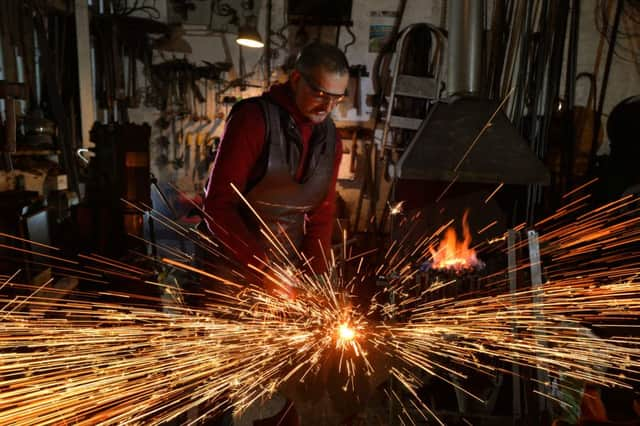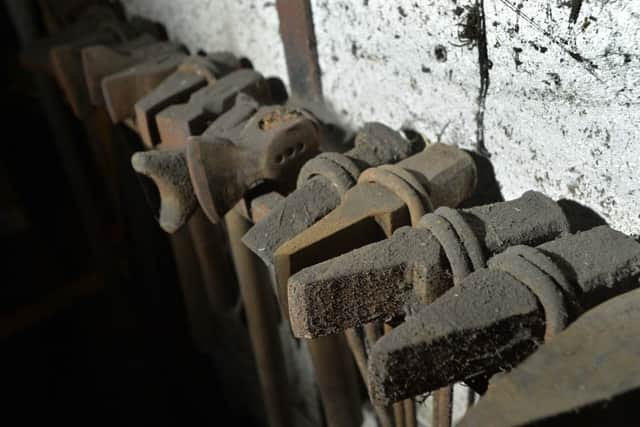Viking-sized task of rescuing Jorvik from our 21st century weather


Last Boxing Day, after more than 24 hours of heavy rain, floodwater swept through Yorkshire as rivers burst their banks and storm drains were unable to cope with the deluge. York was one of the worst-hit places and among the dozens of shops, restaurants and attractions left underwater was the city’s Jorvik museum.
Opened in 1984 to house the massive collection of Viking finds discovered during the building of the Coppergate Shopping Centre, it is one of York’s most popular attractions, welcoming more than 400,000 visitors a year. In fact, it’s the reason why many people visit in the first place, but as the water levels rose Sarah Maltby, York Archaeological Trust’s director of attractions, knew that when they finally got back into the gallery spaces they would be facing a major restoration project.
Advertisement
Hide AdAdvertisement
Hide Ad“Of course it was sad, but the main thing was that we didn’t lose a single artefact,” she says, having just sent a rack of costumes to a company in America that is working on a set of new animatronics. “We also knew that we had an opportunity. We had been given pretty much a blank canvas and so we had to quickly decide what we wanted to do.”


The blueprint for the new-look Jorvik, which will cost an estimated £4.3m, will see a new interactive exhibition at the entrance, a series of new animatronics on its time travel ride and the final galleries will also be redesigned. Due to open just before Easter next year, the project has involved a raft of craftsmen, designers and engineers who have all been helping to recreate what life was like in Viking York. One of them is blacksmith David Stephenson.
“They wanted replicas of various Viking domestic ware that visitors will be able to handle when the museum reopens. I tend to work in a fairly traditional way, but even so some of the pieces like a giant cooking pan were technically complex.”
Largely self-taught, David, who in a previous life was a teacher at an international school in Bangkok, decided to retrain 20 years ago. “I’m not entirely sure where the idea came from, but I’d always enjoyed making things and just at the right time I discovered pretty much a complete set of blacksmith’s equipment was being sold off in Whitby. Initially pretty much everything I made went to the scrap man, but then I was introduced to Brian Russell who runs a forge at Little Newsham, near Durham, and he was a huge inspiration. He taught me so much and if it hadn’t been for him, I’m not sure I’d still be here now.
Advertisement
Hide AdAdvertisement
Hide Ad“Most of the time I make decorative ironwork, but every so often a really interesting project like Jorvik comes along which really tests your knowledge and I hope I’ve done the Viking craftsmen justice.”


For jewellery maker Jim Glazzard, who specialises in Viking and Celtic designs, being drafted in to make replicas of some of Jorvik’s most interesting artefacts was something of a homecoming. The archaeology graduate worked at the attraction a decade and a half ago and it was there that his business was born.
“I studied archaeology in York and I’ve always been interested in Viking history. That’s how I ended up working at Jorvik. I was also involved in a number of re-enactment groups, but it was really hard to buy good replicas of items like cloak pins. One day I was in the galleries looking at the objects and I just began to wonder whether I might be able to make my own antler bone comb.”
With no easy How To manual available, Jim admits that those early pieces, which also included a set of folding trader’s scales, were very much a case of trial and error. However, when various items proved popular at the city’s annual Viking Festival and with a few more years experience under his belt Jim decided to give the Viking replica business a go full time.
Advertisement
Hide AdAdvertisement
Hide AdFrom his studio in Argyll, Asgard Crafts now supplies various museum gift shops, including Jorvik, with hand- carved items, but the chance to create some special pieces for the reopening of the museum was a real privilege.
“I finally got to handle all these objects which I had previously only ever seen behind glass. It was funny because a couple of them had inspired the very first replicas I’d ever made and while mine weren’t perfect I realised I hadn’t done half bad all those years ago.
“I’m now just about to start on a replica barrel padlock. It’s been something I have wanted to do for ages, but it’s incredibly complex and not something you can afford to do unless you have a commission.
“Like everyone who has an association with Jorvik, when we heard the place had been flooded the first thing we wanted to know was whether any of the artefacts had been damaged. Fortunately they hadn’t and to be a part of the restoration team is just a joy.”
Advertisement
Hide AdAdvertisement
Hide AdWhile the museum still looks like a building site, Sarah says they are on track to have every item back in place by next April. Despite the cost of the restoration the trust has taken the decision not to increase ticket prices and while there will be many new elements to Jorvik when it finally does reopen its doors, one thing will be very much the same.
Ask most people what they remember most from their visit to Jorvik and most will say the smells. Dale Air provided the original aromas of rotting rubbish and Viking toilets and they have been brought back in to provide a suitably stinky air to the new museum.
“You always know you’re going to get an interesting challenge when you work with Jorvik,” says Ruth Hempsall Jones, manager at Dale Air, supplier of themed aromas and air-freshening equipment. “So when they came to us and said they wanted to recreate the aroma of a Viking forest we weren’t disappointed.
“We have worked closely with the experts at the trust to pin down the kind of plants which might have grown in a 10th century forest. There are so many individual smells we could include, but it’s just about getting the right mix. Children particularly love anything which smells horrible and this time around we’ve also created an aroma for the new tallow candlemaker animatronic. It doesn’t smell quite as bad as the fatty blubber smell we created for a whaling museum, but it’s up there.”
Advertisement
Hide AdAdvertisement
Hide AdDale Air was set up 20 years and Jorvik was one of the company’s first projects. The team has since worked with the likes of Legoland and the Shrek’s Adventure! theme park in London and it now has an extensive catalogue of off-the-shelf smells, including dragon’s breath, wartime underground and badger poo.
“Smells really do transform a museum into a real experience for the senses,” adds Ruth. “It’s the one place that people always want to talk to us about and while we all wish it hadn’t been flooded it’s been a lovely opportunity to revisit the attraction and hopefully make those smells even more distinctive.”
Jorvik will reopen on April 8. To keep up to date with developments go to jorvik-viking-centre.co.uk